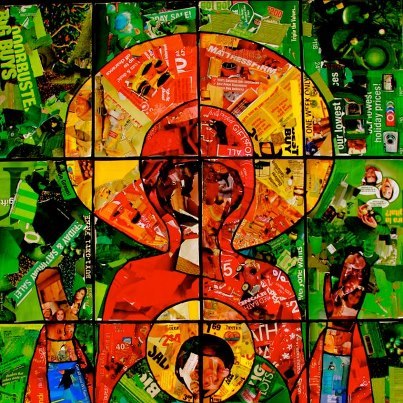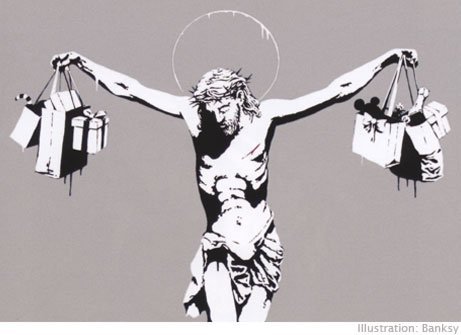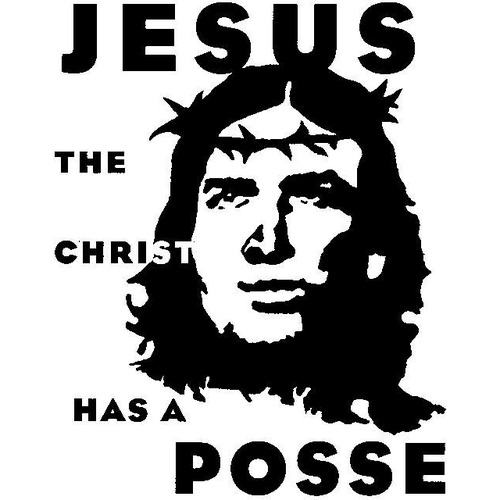Mosaic
Last weekend I was able to join Nadia Bolz-Weber at the conference „Kirchehochzwei“ in Hannover, Germany and translate her keynote from english into german.
She was invited as one of the main speakers to share her experience of her ministry at House for all Sinners and Saints, a ELCA-church she founded in Denver, Colorado. The small congregation describes itself as “a group of folks figuring out how to be a liturgical, Christo-centric, social justice oriented, queer inclusive, incarnational, contemplative, irreverent, ancient-future church with a progressive but deeply rooted theological imagination.”
Pastor Bolz-Weber shared a perspective on her congregation and their daily life together. One of the practical insights was an icon Bolz-Weber was showing.

During Advent last year the congregation gathered in the services after listening to the sermon to design an icon. This artistic process was not only a meditative and spiritual contemplation of the sermon, it was also a practical reflection on consumerism in the pre-christmas time during advent. The whole icon was composed out of pieces of Christmas flyers and ads. All small mosaic pieces of advertising put together show an icon of Mary with the baby Jesus in her womb, to symbolically turn upside down the consumer culture of Advent, and remember the actual meaning of Advent: quite time and preparation.

In his book “Consuming Religion – Christian Faith and Praxis in a Consumer Culture”, Vincent J. Miller, a catholic theologian, treads the same path.
He enfolds what our desires turned us into in a postmodern time: consumers driven by a yearning never to be satisfied. But doing so be supplies a stunning diagnoses of our contemporary consumer culture.
Millers main thesis is this: the problem with a consumer culture is not on the level of beliefs in the first place. It lies at the level of practices and behaviors. Miller connects insights on the culture we are surrounded by with insights on our religious life. In the beginning he states:
“This is not a book about religion against consumer culture; it is a book about the fate of religion in consumer culture”
The author explores the cultural and economic problem of consumerism. In his analysis he is supported by social critics of post-structuralism, including Guy Dubord and Pierre Bourdieu and enfolds the consequences of the Western commodification of culture. In this process Miller always illustrates the effects this consumer culture has on faith, Christian narratives, liturgy and symbols.
But Miller argues that the problem is not consumer culture per se. In his eyes it lies at the level of practices. The problem concerns the manner in which the structures and practices of a consumer culture domesticate religious beliefs and practices. Consumerism may fight against religion. But it is commodification that disarms it.
Miller identifies two specific results of the commodification of religion: abstraction and fragmentation.With the practical example of the “use” of of Mother Theresa Miller illustrates these dynamics. According to Miller, Mother Theresa is taken out of context and out of theconcrete circumstances of her life—that is, her Roman Catholic tradition with its religious and lifestyle demands, some of them rigidly exclusive—and re-appropriated them to different ends. Whether it is Che Guevara or Jesus Christ, a consumer culture inclines people to abstract beliefs, symbols and practices from their traditional contexts and to engage them as free-floating signifiers.

Miller: “Religious materials are thrown into a cultural marketplace where they can be embraced enthusiastically but not put into practice.”
But Miller resists pessimism and believes it is possible to live a more authentically Christian life in a culture that is neither entirely Christian in its logic nor entirely alien. He also believes it is possible to accomplish politically significant things in a consumer culture.
The book concludes with a more prescriptive chapter; a proposal of strategies to cope with the challenges described in the preceding chapters. The proposed strategies aim at recovering the pro-activism of the religious experience as a lived guide, and at overcoming the reduction of religious elements to commodities submitted to individual tastes. The author suggests tactics embedded in three ecclesial scenarios: theology, the liturgy and “alternative communication and organizational structures”.
To Miller the solution is not a rejection of consumer culture in general, but a wise way of living in it. Reflection and contemplation seems to be the first step of this deconstruction process. Using the idea of “bricolage” (Michel de Certeau) Miller also trails the fragment image. The mosaic idea almost seems to follow the one body with many parts (1Cor 12)
This shows how even Christmas ads, after a critical process of reflection can create something beautiful that points to something bigger and more important. Something that money could never buy.
Leave a Reply
You must be logged in to post a comment.